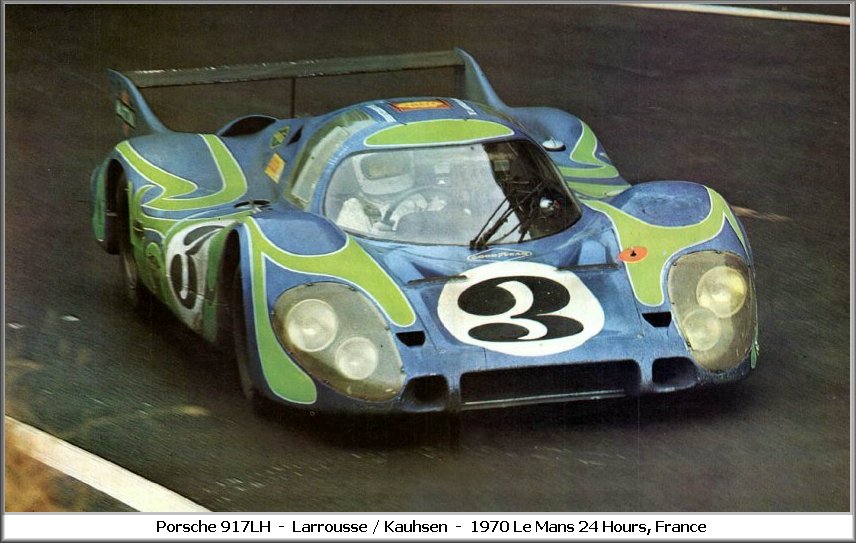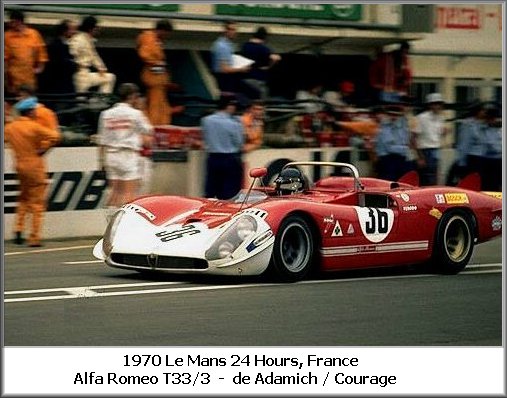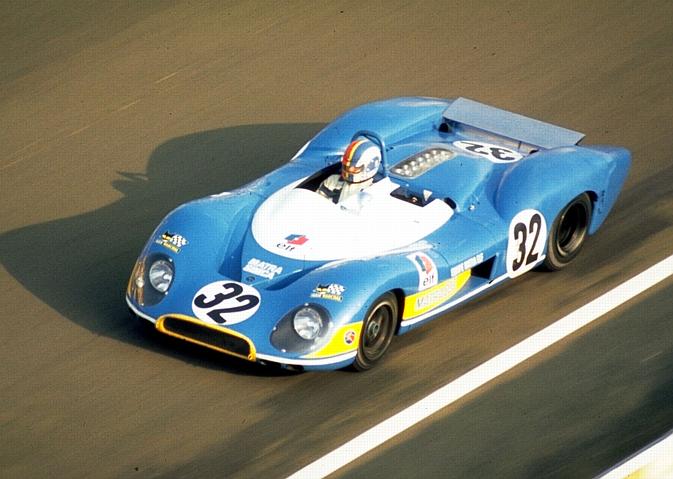
|
|






Without Wyer - Part 1 |
By Ted West (Road & Track September 1970) Porsche Makes It At Last - Without Wyer There are two ways you can do it. You can either spend the entire spring winning the Manufacturer's Championship and then break your donkey trying to win Le mans, or you can just spend the entire spring breaking your donkey trying to get ready to win Le mans. One way is as good as the other, because if you don't win Le Mans the rest of it just doesn't matter (for further references, see the chins of World Champion Porsche last year, badly scraped from being dragged on the ground after losing the 24-hr by 100 yards; see also the sly, fully satisfied grin on winner Jacky Ickx's face whenever he talks about that race, even though he won only one other enduro all that year). Being Weltmeister is nice, but only if one of the races you win happens to pass within 20 feet of a pair of pleasant little restaurants in Hunaudiéres at something over 200 miles per hour. And so Le Mans received its usual huge entry, with every factory this side of Alpine (mercifully absent this year) dealing out race like half-price coupons, consulting its corporate astrologers for weaknesses in the skies, sleeping with middle toes crossed, and doing anything else that might keep its cars running 24 hours in a row. Porsche and Ferrari were there, of course, the former having won the Manufacturer's title in the most inevitable sort of way with six pre-Le Mans wins to Ferrari's one. Then there were the Group 6 entrants, Alfa and Matra, neither of whom took the entire series seriously, preferring to skip the occasional race in favor of developing a suitable Le Mans car. However the teams may regard the Championship, the sheer numbers present at Le Mans make clear what is thought of this event. There were, mind you, eleven Ferrari 512s, eight Porsche 917s, four Alfa T 33/3s, three Matras (one 660, two 650s), two Ferrari 312Ps and two Porsche 908s. Approximately half of these cars were ostensibly "private" entries, but anything more than a cursory glance revealed that everyone of them had been haevily breathed on by the gods back at the foundry. Nobody was taking any chances. The Porsche 917s came in two shapes, with two different engines. There were the usual shorttail 917s, three for John Wyer, two for POrsche Salzburg (one which didn't start for lack - would you believe it? - of a second driver) and one for Gijs van Lennep/David Piper. Then there were two very longtail 917s with high vertical fins and horizontal airfoil for Vic Elford/Kurt Ahrens of Porsche Salzburg and Gerard Larrousse/Willi Kauhsen of the Martini International team. These cars, dubbed "batmobiles" by the dullards who prevail, were fantastic looking, reminding one of the pre'war German record cars (though oddly the shapes were actually worked out by a French team of aerodynamicists) and the Martini car made its point even more indelibly by carrying a purple-dayglo green psyche-stripe paint job that was so lovely that we almost had the temerity to say so out loud before being informed by the Sacred Guardians of Good Taste (read, British Motoring Press) that it was, after all, "unthinkable." Before that I could have sworn I liked it. |
The longtail 917 had been very unpleasant down Mulsanne in early spring tests, but the addition of the wing had made it so nice that Vic said he could one-hand down back at 225 - which by the way, does not mean that you or I, or maybe anyone else, could do the same. Vic lives by a different set of rules. At any rate (of speed), it worked quite well, While the short 917s were subject to that same old hull speed, 5-liter or not, and just plain didn't go much better than around 205-208. (Shucks, Mortie.) The longtails both used 5-speeds and Vic's 5-liter was expecting about 240, but Herr Doktor Komputer didn't figure tire drag correctly and disappointed them slightly. At last, Vic's was faster on Mulsanne than all Ferraris. He, Rodriguez/Kinnunen and Siffert/Redman had 5-liter engines, while the other 917s had the thoroughly reliable 4.5. Ferrari may have been slower down Mulsanne than Vic's Porsche, but the longtail trim they were all faster down there than any other Porsche. Ferrari had spent time on Le Mans and arrived with a very clean longtail. Except for a partially wasted spoiler lip and vertical fins that weren't really properly aligned front-to-rear and, if anything, would make the car turn left (to compensate fior the righthand kink in Mulsanne, they said later), the streamlining was otherwise quite effective. All the cars but one (the Escuderia Montjuich entry) were coupes, and the factory selected the lowlift noses which had first appeared at Sebring, giving two others to Filipinetti. Among the other entries were three shorttail private cars and three longtails, mated with the less effective Daytona nose. This latter combination proved a terrible handful for lack of front-end stability, but ironically two of these three, Sam Posey/Ronnie Bucknum and Hughes de Fierlandt/Al Walker, outlasted the more "important" Ferraris. The 512S engine for Le Mans used a slightly milder cam, subtly changed intake porting, lovely new transparent plastic velocity stacks (in case sort of thing interests you), and one-inch-wider rear tires. |
Matra, for all their local-boy-makes-goodery, arrived depressingly unprepared. Ostensibly they had been spending the entire spring on Le Mans and hadn't competed since Monza but somehow they had only completed one of the new 660 models and had to cobble up a pair of 650s from spare parts and long lost dreams in order to present anything like a serious entry. Each of their three cars was different, except that all used the center-induction 1970 F1 V-12. They ran one completely conventional short 650 for Jean-Pierre Jabouille/Patrick Depailler, a longtail 650 with narrow long trailing pontoons (and therefor 13-in. instead of 15-in. rear tires) for Jack Brabham/Francois Cevert, and the all-new 660 for Jean-Pierre Beltoise/Heri Pescarolo. Chief differnce in the 660 is that the monocoque stops at the firewall, after which the engine carries all the rear gubbins. The front suspension is quite different, the tub very much simpler and lighter, the body aerodynamically more efficient, and all of this grand and glorious news has somehow produced a car which is yet slower than its predecessor, less stable at speed, less predictable in corners and generally sordid. And even the 650, after an additional year's srting and lightening, is still a full three seconds slower that the 3-liter Porsches were last year at Le Mans. It's possible to say the 660 is simply too new, but with the amount of time spent on it for Le Mans, it would seem more likely that Matra hasn't found any clues yet, more's the pity. |
Matra MS 650 of Jack Brabham/Francois Cevert |
Alfa had four 33/3s, beautifully turned out as usual, sexiest of all as usual. These cars too had long tails, with two vertical fins mounted a foot inboard and large spoiler tabs along the trailing edge. One nice touch noticed by our Geoffrey Goddard was a little air intake beautifully molded into the passenger seat cover to jet cool air to the driver. Very comfy. Aside from detuning the V-8s in order to suppress their sicidal tendencies teh Alfas were very much as always. |